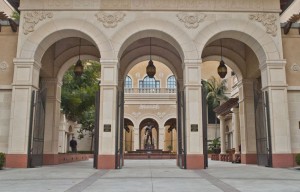New building for Interactive Media Program holds top resources
Students in the School of Cinematic Arts’ Interactive Media and Games Division expressed excitement over the new building, which publicly opened last week.

Featured attraction · The School of Cinematic Arts’ Interactive Media and Games Division includes video game design, which has been ranked No. 1 in the U.S. by the Princeton Review and U.S. and World News Report. – Daily Trojan file photo
“I think the new building is great for the interactive department,” said Bryan Zhang, an interactive media MFA student. “All of the spaces are new and clean and it’s got some nice computer labs.”
The school celebrated the opening of the building by hosting a panel discussion on June 12 featuring George Lucas, Steven Spielberg and Don Mattrick, president of Microsoft’s Interactive Entertainment Business.
The building will house SCA’s Interactive Media and Games Division. Students in the program create digital media scholarship, media art and games. The building features technology including a 3-D printer, industry-standard game testing rooms, motion detectors and touch-screen monitors.
“Personally, I would not expect a lot of the cool stuff they have in here to be out in the industry yet,” Zhang said, “so I think it’s cool that we have it here.”
School of Cinematic Arts Dean Elizabeth Daley said the building’s technology will give USC students in the program a unique advantage.
“The School of Cinematic Arts is both industry-facing and future-focused,” Daley said. “The new Interactive Media Building allows our students to work in the same kind of cutting-edge facilities as the professionals, which makes them uniquely prepared for the entertainment industry of the 21st century and access to the latest, best technology allows our students and faculty to fully realize their storytelling vision, even as they imagine what the next technological breakthrough could be.”
The George Lucas Foundation donated $45 million of the $50 million needed to build the facility, according to the Los Angeles Times.
Sheridan Watson contributed to this report.
